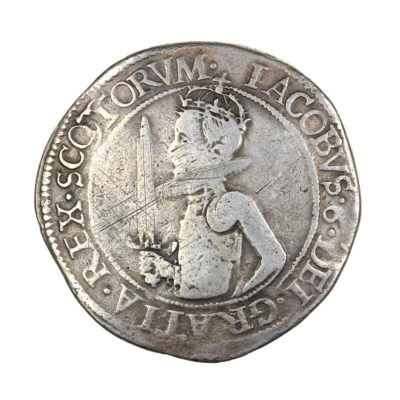
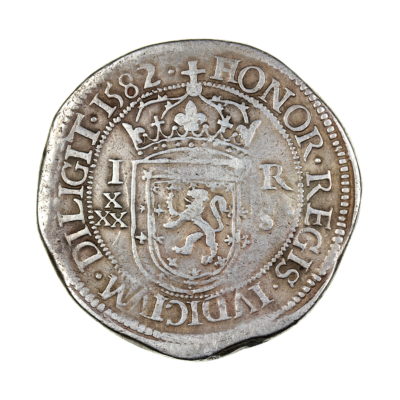
James VI Silver 30 Shillings AD 1582
James VI AD 1567-1625
When James VI acceded to the Scottish throne upon the abdication of his mother, Mary Queen of Scots, in AD 1567 he was only a year old. A council of regency ruled on his behalf until he was a teenager and took up personal rule in the early 1580’s.
The coinage he inherited from his mother was particularly complicated made worse by the fact that there were many forgeries and counterfeit coins also in circulation. The reign itself can be divided into two distinct periods; that prior to James’ accession to the English throne in AD 1603 and then the period between AD 1603 and James’ death in AD 1625 when he was the king of two separate realms.
As with Mary the coinage of James VI is also diverse and somewhat complicated. lnflation was a problem during much of his reign and as a result the coinage was frequently recalled and reissued to a new design. There were a total of 10 recoinages during the reign, 8 of which occurred prior to AD 1603.
Producing a new coinage was a profitable exercise, old coins were exchanged for new which invariably contained less bullion, thus were of lower intrinsic value meaning that the government did not pay for the issue of new coins it was left to the citizens of Scotland.
Mary’s coinage continued to circulate during the early part of James’ reign. The first coinage issued under James VI contained just 3 silver coins, the ryal, or Sword dollar on account of the crowned sword depicted on the reverse with a value of 30 Shillings.
There was also the half and quarter ryal. These coins were issued between AD 1567 and 1571. At the time it was illegal to break down or to melt the coinage and to combat fraud Men of Judgement were appointed in every town before whom all payments had to be made. Any coinage presented and found to be false or clipped was punished with a heavy fee to the presenter.
James’ second recoinage took place in AD 1572. The ryal was replaced by the silver half merk, or noble which was issued at 6s8d in value. Also issued were half merk, quarter merk and two merk coins each depicting a thistle on the reverse. The 2 merk, which was also known as the thistle dollar had a value of 26s8d. In addition, the largest gold coin ever issued in Scotland, the Twenty Pound piece was issued for 2 years.
The price of silver increased rapidly during the 1570’s and to prevent the coinage from being melted or exported it wa necessary to have a revaluation in AD1578. This resulted in the silver Testoon’s of Mary being revalued at 7s4d, half Testoon’s at 3s8d and ryaJs of both James and Mary at 36s 9d. Silver Bawbees issued under Mary were also reduced from 6 pence to 3 pence. All revalued coins were countermarked with a thistle stamp.
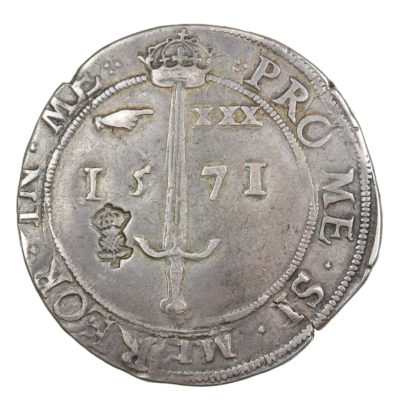
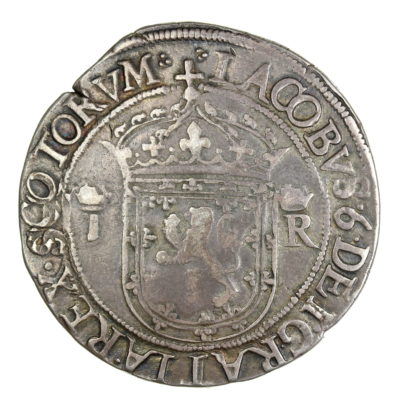
James VI Silver Ryal, revalued in AD 1578
A Third recoinage took place in AD 1581 in which 4 new silver coins were introduced, 16 shillings together with the 8, 4 and 2 shillings again depicting a thistle on the reverse. A new gold coin, the Ducat initially valued at 80 shillings, was also issued.
A further devaluation took place in AD 1584 when the Fourth coinage was issued. This resulted in the introduction of three gold coins, the Lion noble issued at 75 shillings, two thirds, noble and one third noble, each depicted a crowned lion sejant with sword and sceptre on the obverse. ew silver coins issued included the 40s, 30s 20s and 10s. These coins depict a half- length figure of James with sword in hand on the obverse.
The fifth recoinage in AD 1588 saw the introduction of the gold Thistle noble which was worth 11 merks.
The sixth recoinage in AD 1591 saw the gold Ducat replaced by the smaller Hat piece which was also valued at 80 shillings. A new and unusual design on the half and quarter merks depicting a balance superimposed on a sword together with the legend, ‘In these a tyrant differs from a king’.
Two years later a seventh recoinage introduced new 10 shilling, 5 shilling, 30 pence and 12 pence coins depicting a bare headed bust of Jame in armour whilst retaining the thistle on the reverse.
New gold coins introduced were the Rider and half rider pieces. At around this time James also issued his Basikon Dares, a Proclamation in which he reconfirmed that kings are appointed by God. As a result the Pope, Clement VIII was to have no jurisdiction over Scottish affairs. His son, Charles I was to inherit these autocratic tendencies with fatal results.
An eighth recoinage in AD 1601 saw a new Merk half and quarter merk together with the introduction of an eight merk a11 depicting a thistle. Gold coins included the full and half Sword & Sceptre pieces.
As the striking of billon coins required little precious metal it was especially profitable although the king claimed it was done for the benefit of the poor. James’ billon coins commenced with placks and halves in AD 1583. Later in AD 1588 a Hardhead depicting a lion rampant on a shield was added. The Saltire plack was then issued in AD 1594. These were followed by a copper twopence which was known as a Turner. These coins closely replicated the French double tournois with a portrait of the king but 3 thistle heads as opposed to 3 lis on the reverse.
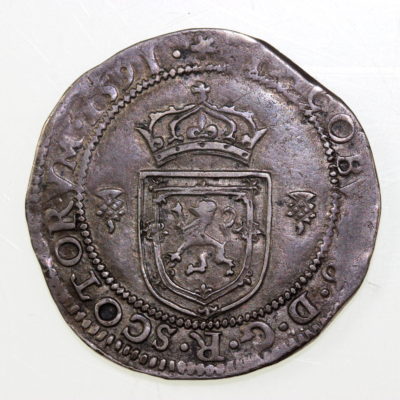
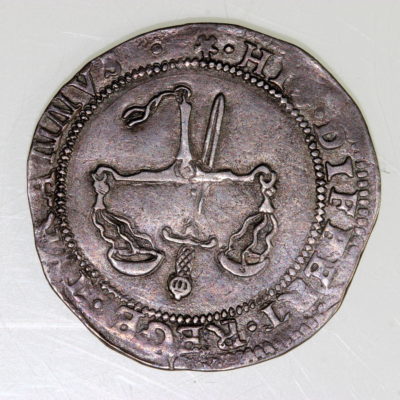
James VI Balance Half Merk AD 1591
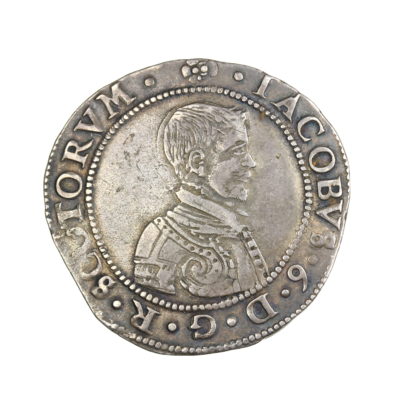
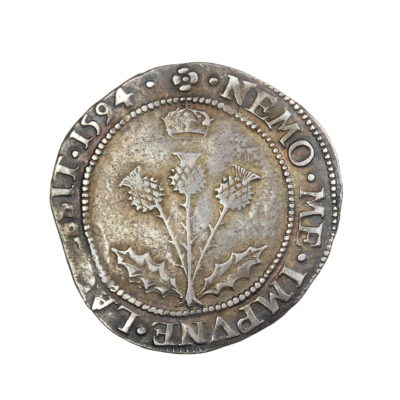
James VI Silver 10 Shillings AD 1594
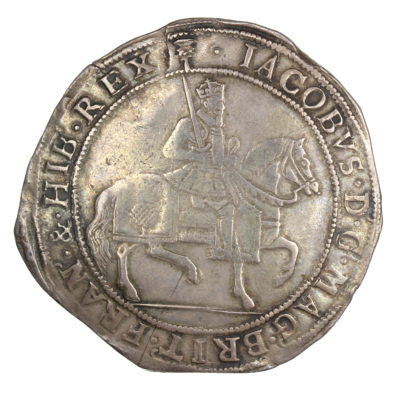
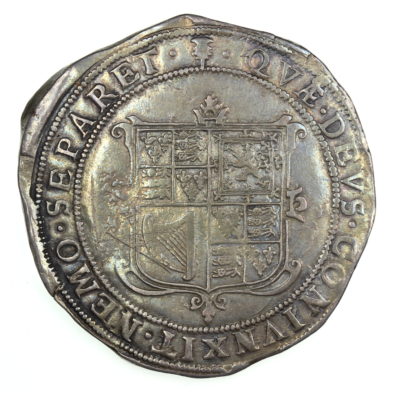
James VI Silver 60 Shillings
Accession to the English Throne
After accession to the English throne upon the death of Elizabeth I in AD 1603 Scotland remained a separate kingdom however a currency union of orts was achieved in April of that year ensuring that all Scottish coins were in future to be struck to English standards. The Scottish shilling was pegged at 12 Scottish shillings to a single English shilling. As a result, the gold Scottish Unit introduced in the ninth and tenth recoinages was pegged at 12 Scottish pounds as opposed to a single English pound or Unite, its English equivalent.
The new silver coins include the 60s, 30s and 12s which equated to the English crown, half crown and shilling whilst the 6s, 2s and ls equated to English sixpence, half groat and penny. English designs were also closely followed with the king being shown on horseback on the larger 60 and 30 shilling pieces together with a shield on the reverse. Initially Scottish coins, which were minted in London, were counter stamped with a thistle head. After AD 1604 the Edinburgh mint again issued coins struck in Scotland.
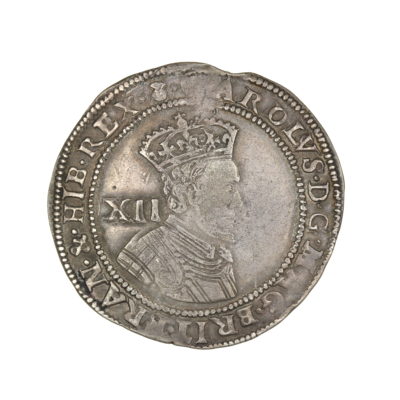
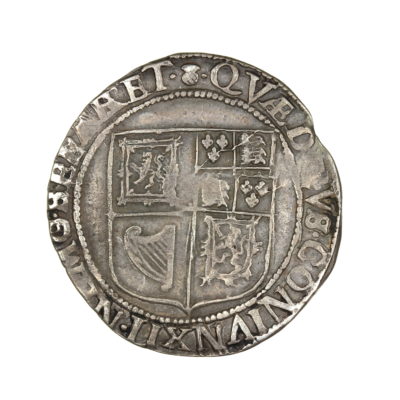
Charles I Silver 12 Shillings, First Coinage
Charles I AD 1625-1649
When Charles I succeeded his father in AD 1625 Scottish coinage continued to reflect strong English influence and most of the same basic designs were retained.
Although Scotland became embroiled in the Civil War this momentous event is not as clearly reflected in its coinage. Nicholas Briot was appointed as Master of the Scottish mint in AD 1636. He initiated a Second and final hammered coinage which became known as Briot’s hammered issue. Half merks, 40 and 20 pence were issued for the first time under Charles. A year later in AD 1637 a third coinage was issued.
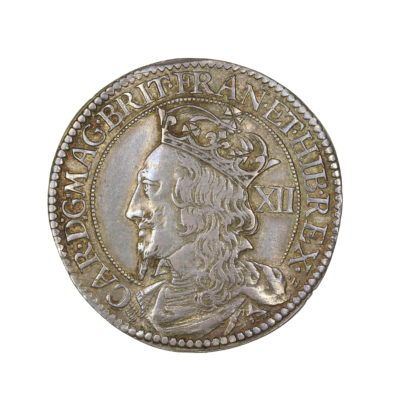
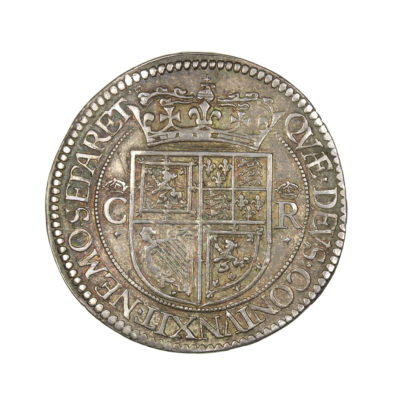
Charles I Silver 12 Shillings, Briots Third Coinage
This was revolutionary in that for the first time in Scotland the coins were machine made. This was initially resisted by the Scottish government as a threat to jobs although Briot had already been minting milled coins in London and Paris since AD 1631. When Briot returned to England in AD 1638 to work for the king his place was taken by Sir John Falconer, his son in law. Whilst retaining most of the existing designs these machined coins are well struck and are of a much higher standard than the early hammered coins.
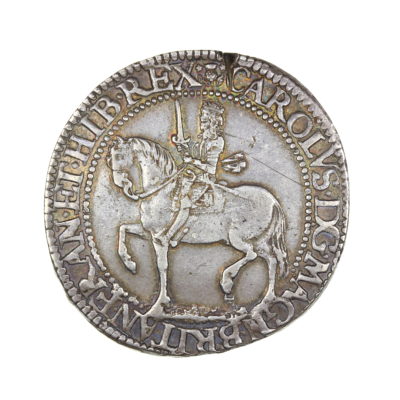
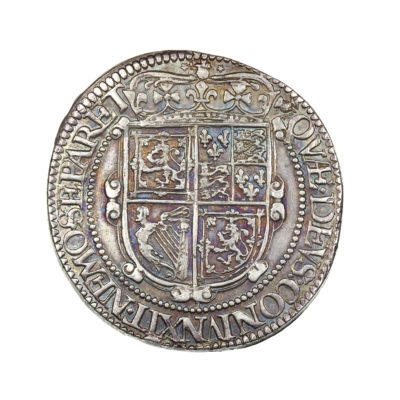
Charles I Silver 30 Shillings, Falconer’s Issue
The Third coinage can be divided into 5 sub issues.
1 Briot’ s issue
2 Intermediate issue
3 Falconer’s first issue with F
4 Falconer’s second issue with F
5 Falconer’s anonymous issue.
There was a small fourth coinage issued in AD 1642 and comprising Silver 3 and 2 shilling pieces each depicting the king’s head and shield.
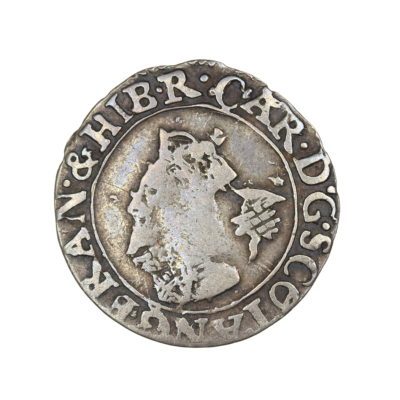
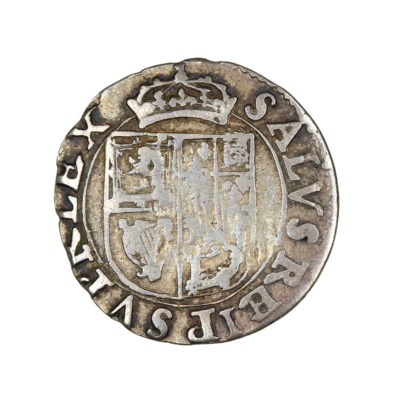
Charles I Silver 3 Shillings, Forth Coinage
The first copper coinage of Charles I was issued after AD 1629 and comprised the Twopence, or Turner, and the penny both of which depicted a thistle and rampant lion. From AD 1632-1639 a series known as the Earl of Stirling coinage was issued.
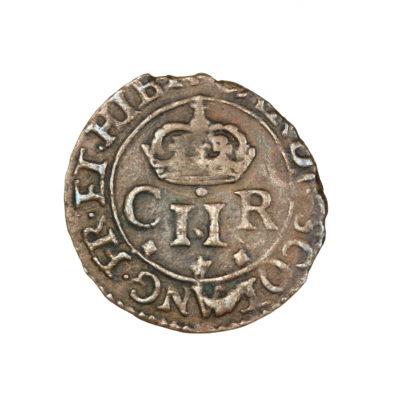
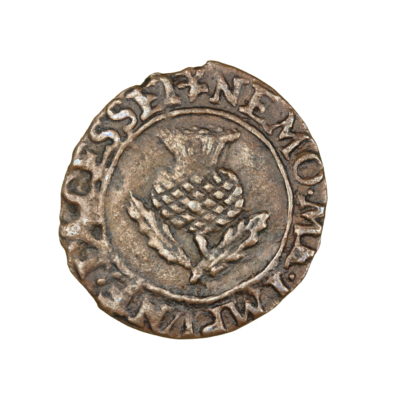
Charles I, Copper Twopence (Turner)
This comprised a Twopence with 2 different designs, one depicting a Scottish crown, the second an English crown. Although is is known that pennies were issued, none are extant. A final series of copper Twopence, also known as Turners or Bodies was also issued in AD 1642, 1644, 1648 and 1650. These were the only coins struck in Scotland during the later years of the Civil War.
The Edinburgh mint was closed after Charles I was executed and did not reopen until after the Restoration of Charles II in AD 1660. Commonwealth coins struck in England circulated in Scotland during the interregnum.
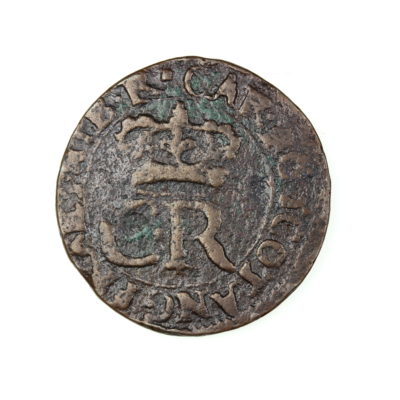
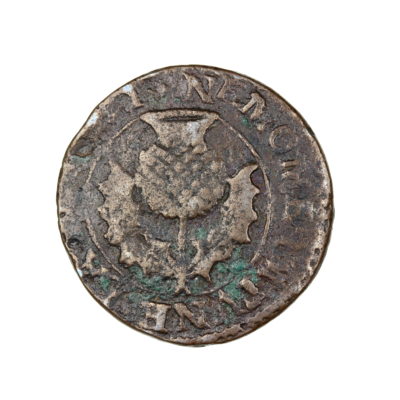
Charle I, Copper Twopence (Turner or Bodle)
All coins featured in this article are from the Fort collection.
A carefully assembled group of Ancient, Anglo-Saxon and Medieval coins collected for their historical importance and condition. Sourced from reputable dealers and auction houses around the globe over some 20 years.
The comprehensive Scottish part of this collection in particular enables us to shine a light in to a fascinating period of British history. Our current Scottish coin stock (which includes many coins from the Fort collection) can be viewed in our dedicated category, found under ‘Medieval coins’ above or by clicking here.





